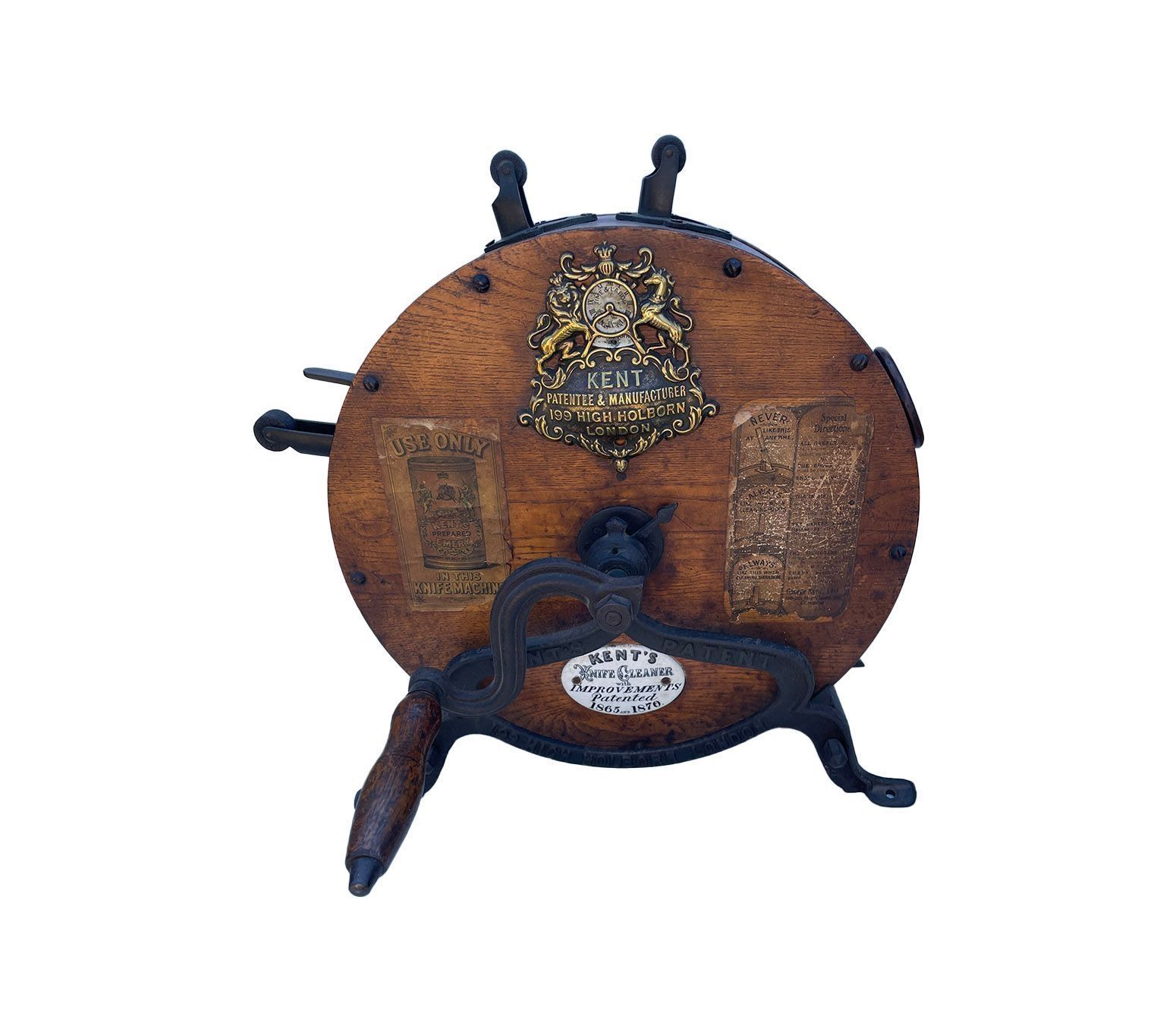Kent's Knife Cleaner
Name/Title
Kent's Knife CleanerEntry/Object ID
2025.1.295Description
Circular wood drum set on cast iron feet, with slots around the top and sides for inserting knives for the action of cleaning them. Emery powder was poured into the drum and the action of alternate rows of brushes and leather strips cleaned the knives. The crank handle turned the interior mechanism.Context
George Kent was born in 1806 and apprenticed to the wire-work trade in Chelsea (a borough of London known for its upper class citizens and high-end shops). He worked as a window blind maker while he worked on inventing his knife cleaner. He was given a patent on June 12, 1844 for the knife cleaning machine, when he set up shop at 329 Strand, 218 Regent St and 101 Holborn, until 1854, and at 199 High Holborn from 1854 to his death. While the knife cleaner was his claim to fame and his most prominent piece of invention, he also manufactured other domestic time-saving machines, including whisks, strainers, sifters, and washing machines. He died on May 23, 1890. By the end of the nineteenth century, Kent's patented rotary knife-cleaning machines were used in British colonies, the Americas, had won international exhibition prize medals, and had sold over 100,000 machines. The cleaners came in eight different sizes, ranging in price from £3 and 18 shillings to £14 and 14 shillings. The largest size could clean nine table or dessert knives and the smallest versions cleaned 3-5 knives. (ref: The Art of Antiquing - Kents, London, England Knife Cleaner).Category
Business, Tools




